
Curious? Here’s the Real Talk
This might sound familiar: You’re scrolling on Instagram one night and suddenly—bam—photos of Olympic athletes and wellness influencers peppered with dark, round marks. You think, “Okay, cupping! Everyone swears by it… it can’t be that bad, right?”
I thought the same. My friend Sam raved about his first cupping session. “Dude, you have to try it,” he told me, pulling up his shirt to show off the massive polka dots lining his back. It looked kind of dramatic, like he’d hugged a giant octopus. But he seemed happy… until the next morning, when those marks still burned and his skin looked like it had wrestled with sandpaper. That’s when I started digging into the dangers of cupping, and—honestly—found myself more than a little surprised.
Why Do We Fall For The Hype?
Is Cupping the Holy Grail?
Let’s be real: when something promises pain relief, detox, and better sleep, it pulls us in. Cupping boasts ancient street cred. Some say the Egyptians used it for fevers, the Chinese for just about everything, and even celebrities flash those circles like trophies after intense workouts. Suddenly, your regular post-gym routine feels… kinda basic, doesn’t it?
I’m not here to completely rain on your parade—let’s be honest, the ritual feels cool, and that “deep-tissue massage” sensation can be oddly relaxing. Still, the question that haunts me (and should probably haunt you): How safe is it really? Turns out, those circles on Sam’s back weren’t just quirky souvenirs…
When The Glow Fades
What Could Really Go Wrong?
Let’s dive headfirst into what usually doesn’t make the fancy brochures. Bruises? Expected. Lasting skin damage, weird infections, or even rare but serious stuff like nerve irritation? Well, nobody at the spa wants to talk about cupping therapy gone wrong—but you should read the stories.
Not Just “Harmless Bruises”
You know those deep reddish-purple circles? They happen because the skin and tiny blood vessels are literally being pulled and broken under the suction cup. For most folks, those marks fade in a week. But sometimes (like with Sam) the bruises stick around, get sore, maybe even get a little puffy. Sometimes they turn into open wounds or get inflamed cupping side effects day after a session are the stuff nobody warns you about.
There was this athlete—let’s call her Jess—who felt “invincible” after her first cupping. She tried two sessions back-to-back, stacked on marathon training, and ended up with a stubborn rash and gnarly swelling that stopped her training in its tracks. Turns out, her immune system was not on board with the adventure. (And her coach still teases her about “the octopus attack.”)
Burns, Blisters, and Skin Fails
If you use fire (yes, fire) to heat the cups, it can get a little dicey. Burns are rare, but most reported cases happen at home—where “DIY wellness” meets YouTube bravery. Even gentle suction, if done wrong or for too long, can create blistering or torn skin. Once that barrier’s broken? Hello, infection risk.
And trust me, those aren’t the pretty spa stories you’ll find on every influencer feed.
Diving Deeper: The Side Effects Nobody Wants
The Usual Suspects
Cupping’s “most likely” side effects sort of read like the aftermath of a silly night out:
- Sore spots that don’t fade fast
- Red or purple marks—sometimes circles, sometimes smears
- Aching a little more than “relaxed” the day after
- Headaches, lightheadedness, even mild nausea
Once, after a session for tension headaches, I almost fainted walking home. That dizzy, “Did I stand up too fast?” feeling? It’s a thing. Banner Health and WebMD both mention lightheadedness and even flu-like symptoms for a day or so. Not exactly what you signed up for when aching muscles were the only item on your agenda, right?
Itchy, Rash-Prone, or Already Sensitive?
Here’s where the plot thickens: if you deal with eczema, psoriasis, or just have thin, sensitive skin (thanks, genetics or meds), those classic cupping side effects day after a session can (and do) hit harder. It’s not just a cosmetic problem either—sometimes the area becomes inflamed, or the skin breaks down, inviting bacteria to come party. That means longer healing, weird scarring, and (worst case) an infection you’ll remember a lot longer than the “relief.”
Quick Table: What Can Go Wrong?
| Issue | What It Looks/Feels Like | Who’s Most at Risk |
|---|---|---|
| Bruising, Soreness | Purple-red circles or sore spots | Everyone (but worse for sensitive skin) |
| Burns, Blisters | Pain, open or wet wounds | Home-use, DIY, or weak/inexperienced practitioners |
| Skin Infections | Redness, pus, hot/swollen skin | People with broken skin, impaired immunity |
| Nerve Pain | Shooting or tingling sensations | Anyone with underlying neck/spine issues |
| Bloodborne Infection | Flu-like, can be severe | Anyone exposed to unsterilized cups/needles |
What Happens If It Really Goes Sideways?
The Stories They Don’t Advertise
I’ll never forget reading about a retreat—one of those “wellness getaways” where everyone tried cupping and cold plunges. One unlucky guest left with an abscess, another with weeks of bruising and burning that nearly needed antibiotics. She just wanted a “reset”… not a round of doctor visits.
The scary headlines? They’re rare, but they’re legit. There are stories of people—otherwise healthy!—developing nerve injuries, serious infections, or even rare bleeding under the skull from scalp cupping. A thorough review in Complementary Medicine Research found 14 cases of neurological complications linked to cupping. Most recovered… but, as my grandma used to say, “Why risk it?”
How Infections Sneak In
Especially with wet cupping—where there’s blood involved—using shared or poorly-sterilized cups invites hepatitis B/C or, in worst-case scenarios, HIV. It sounds dramatic, but in areas where cupping is done outside medical offices, bloodborne disease transmission crops up more than you might think. There’s a big, sobering study in the American Journal of Infection Control showing higher hepatitis C rates due to traditional Hijama cupping with bad cleaning practices. Even modern spots aren’t immune if corners get cut.
And if you want some muggy real-life drama, check out more tales at cupping therapy gone wrong where folks share setbacks—and what they wish they’d known first!
Is Cupping Ever “Safe Enough”?
Don’t Panic… But Don’t Be Naive
It’s not all doom and gloom—cupping is not evil, and plenty of people have a decent experience. But you have to stay smart. Are you thinking about trying it (again) after reading all this? Please, take a pause first.
Who Should Absolutely Avoid Cupping?
- People on blood thinners (risk of bleeding, bruising)
- Anyone with anemia or clotting disorders
- Those with eczema, psoriasis, or active skin issues
- Immunocompromised folks (infection risk skyrockets)
- Pregnant people (especially belly/lower back areas)
- If you’ve recently had surgery or have implanted devices/pacemakers
- Kids, elderly (frail skin bruises super easily)
If your gut says “maybe skip it,” listen up.
Signs It’s Not For You
- You bruise if someone looks at you sideways
- You take meds that thin your blood
- Your pain is deep, constant, or has nerve/red flag features (numbness, burning, sudden weakness, etc.)
- Your skin has open areas, infections, or allergies to latex/plastic
Wish-List: The Perfect Session
What You’d Want From a Practitioner
You’ll want a licensed, experienced pro—one who:
- Asks about your health history (for real, not just a checkbox)
- Uses sterile, single-use cups (especially if there’s blood)
- Explains what can go wrong and how to spot it
- Keeps the session short, checks in if you’re uncomfortable, and says “no” if you’re not a fair candidate
If it feels sketchy or rushed… bolt. There’s always a risk with cupping, but when the setup’s professional, your odds improve. Still, even then, you might want to check out cupping side effects day after just so nothing catches you off guard.
What To Watch For: Day-After Red Flags
- Pain that feels worse or different than before
- Redness, swelling, warmth—especially if it spreads
- Fever or chills (get checked right away)
- Blisters or open sores that don’t heal up
- Strange numbness, tingling, or muscle weakness (especially near the cupped area)
No improvement in a week? Call your doctor… really. Most bruises are just that. But any change in color, swelling, pus, or worsening symptoms deserve real attention. After all, sometimes what seems like a little setback is actually the start of something more serious (trust me, cupping therapy gone wrong stories exist for a reason).
So… What Now? Wrapping It All Up
Let’s land this plane: You and I both want quick fixes. We love hacks, shortcuts…a five-second reel promising stress relief or speedy recovery. But that’s exactly how the dangers of cupping sneak in undetected—those easy-to-ignore warnings, the “probably won’t happen to me” vibes. The odds you’ll end up with something serious? Small, but not zero. Bruises that hang around, infections out of nowhere, or just…feeling worse instead of better for days after? That’s not cool. Especially when the promised magic is more about marketing than hard science. Even major health sites, from the WebMD to Cleveland Clinic, say the evidence for lasting benefits just isn’t strong.
Your takeaway? Don’t get lured in by hype, hashtags, and fashionably bruised athletes. If you do give cupping a try, do it for the right reasons—with someone who knows their stuff, and always trust what your body tells you. Research, ask awkward questions, and bail if things seem off. (Or heck… opt for a massage or honest rest; sometimes old-school is the best school.)
Now I want to hear from you—have you ever tried cupping? Did it rock your world, or did you end up googling “weird bruises not going away”? Drop a comment or story below. And if you’re still curious about what can happen the day after… don’t forget to check out cupping side effects day after. Your future self (and your skin) will thank you.






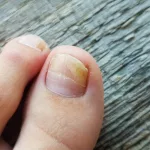
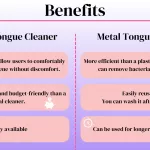
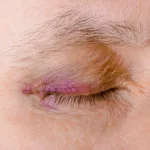


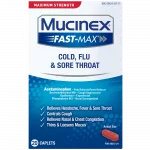

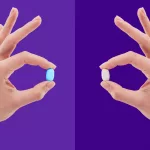




Leave a Reply
You must be logged in to post a comment.